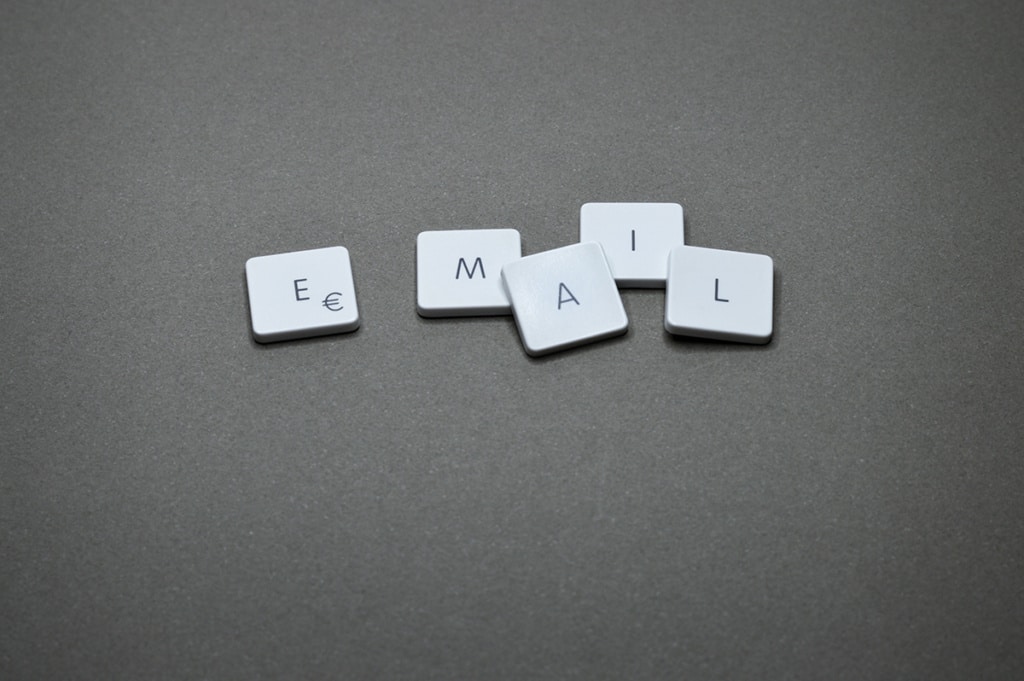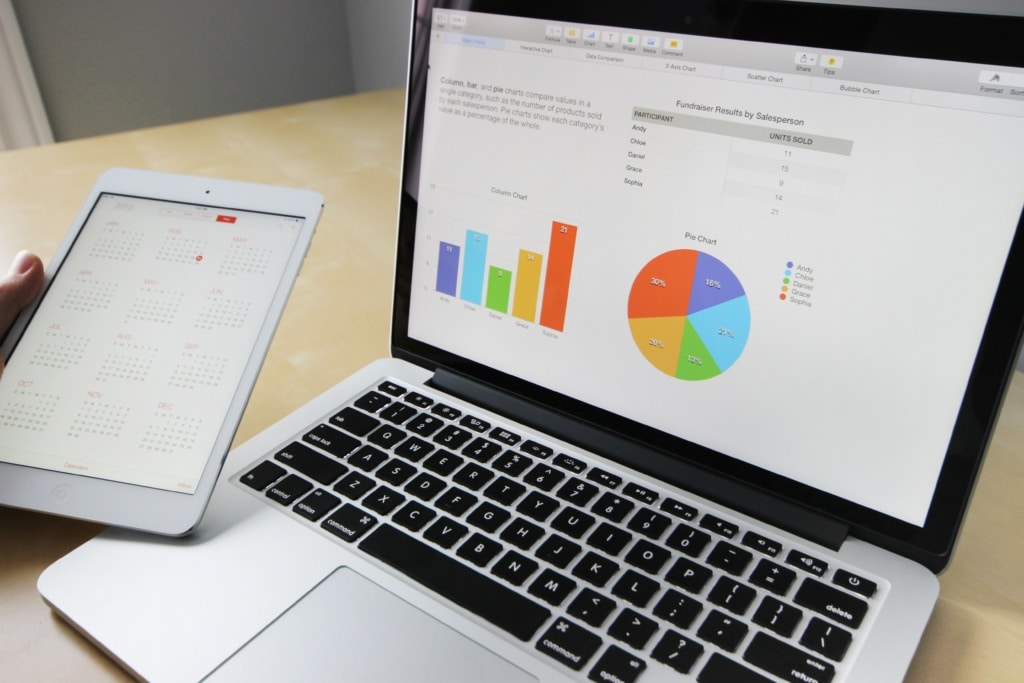Tips & Tricks to Increase Your Average Open Rate For Email
- February 3, 2023
- Digital Marketing
With the proper software, businesses can easily create beautiful and professional emails that will stand out in people’s inboxes. And the right tracking tools ensure that businesses can see how well their emails are performing and make necessary adjustments to improve results.
If you are looking to boost your open rate for email marketing but don’t know where to start, you can keep reading this guide, try to do the work, and hope for the best – or you can work with Nerdy South Inc, the leading provider of email marketing in Brevard County, FL.
We help businesses increase their open rates by providing them with the smartest, most effective email marketing tools available. We’ve managed campaigns for everything from the education industry to the real estate industry, including for large corporations and small local businesses.
Our email marketing expertise and tools will help you build campaigns with accurate segmentation, personalization, and automation capabilities to increase engagement and conversions. We don’t just believe in average email open rates and click through rates, we believe in creating the highest ROI possible however it takes.
The Importance of an Email Marketing Campaign
Email marketing is an important part of any business’s overall marketing strategy. It allows businesses to stay in touch with their customers and prospects, keep them informed about new products or services, and build customer loyalty.
The best part is, when done correctly and efficiently, email marketing can be incredibly successful and more cost-effective than any other form of internet or digital marketing.
When executed properly, an email marketing campaign helps you to:
• Establish credibility and trust with your target market
• Increase awareness of your brand
• Generate more leads
• Encourage customer loyalty and repeat purchases
What Does The Open Rate Mean? How Do I Calculate It?
The email marketing open rate is one of the most important metrics when measuring the success of an email marketing campaign. The open rate tells you how many people opened your message, thus gauging its effectiveness. To calculate the open rate, simply divide the number of emails opened by the total number sent. For example, if you send 200 emails and 60 of your email recipients open them, your open rate would be 30%.
What’s a Good Email Open Rate?
A good open rate should be around 20%. This means that out of every 10 emails sent, two were actually read by recipients. However, this figure can vary depending on the industry and type of emails sent. For instance, promotional emails have lower open rates than transactional emails. Your specific industry average can be found by running a simple Google search.
How To Improve Your Email Open Rate?
There are several simple but effective strategies you can use to improve your email open rate. Some of these include writing more compelling subject lines, using personalization and segmentation to target specific audiences, optimizing your emails for mobile devices, using A/B testing to determine the best-performing versions of email campaigns, and ensuring that you are in compliance with the laws regarding spam.
You can also improve your open rates by regularly cleaning up your mailing list to remove inactive subscribers, resending emails to those who didn’t open them initially, and frequently testing different tactics. Additionally, by optimizing your emails for various email clients, you can ensure that your campaigns look good in any inbox.
Standing Out From The Competition
If you’re just worried about the average click through rate or average email open rate, then you won’t be doing enough to make your email marketing campaigns stand out from the competition. To truly distinguish yourself, you should strive for an above average performance in all of the key metrics that are applicable for email marketing success.
Every industry has different dynamics, user behavior, and messaging.
For instance, if you have an eCommerce list that contains customers who just purchased from your store, then the open rate will be higher than if you send out broadcasts to people who just signed up to your list without making any purchases.
To ensure a strong performance in this fiercely crowded space it’s essential to continually explore new ways to make your campaigns more successful and stand out from the competition!
Getting Creative with Your Email Marketing Strategies
When it comes to email marketing, you don’t have to limit yourself to the same standard campaigns that everyone else is doing. There are many creative strategies you can use to make your emails stand out from the crowd.
For instance, you can send out personalized emails to each customer instead of generic mass emails. Not only does this help your customers feel like they are getting special attention, but it also allows you to tailor the content of your message more directly toward them.
You can also experiment with interactive elements such as polls, surveys, and quizzes to engage your readers. This can give you insights into the preferences of your customers and help you adjust your campaigns for more effective results.
Research Gives You Insight!
Research suggests that the most optimal times to send promotional emails, like weekly newsletters, are Thursdays and Tuesdays. Consequently, professionals highly recommend segmentation as a best practice in this regard.
Write Compelling Subject Lines
Your email subject lines are one of the most important parts of your email campaign, especially when it comes to your average open rate. If you don’t have an interesting subject line, then you won’t get a lot of people to open the emails and take action on what you’re promoting.
Make sure your email subject lines are eye-catching and stand out from the rest! Try to use words such as “free,” “discount,” and “exclusive” to draw attention; but try not to overdo it since a spam filter may pick it up.
Also, consider personalizing your subject lines by including the recipient’s name or other details that make it feel more relevant to them. These things can also help get your emails delivered by avoiding the same spam filters for common words and phrases.
Finally, you should also consider testing different subject lines to determine what resonates best with your audience. A/B split testing can help you see which subject line performs the best and then you can use that one for the rest of your campaign.
Create an Attention-Grabbing Preview Text
Your preview text should work hand in hand with the subject line to give readers a quick glimpse of what they can expect from your email. Don’t make it too long—a few words are enough to get someone’s attention and encourage them to open the message.
Relevant Content
Make sure your content is well-written and properly formatted for maximum impact. Especially use spacing to break up long chunks of text and keep your readers engaged. Provide valuable, relevant information that answers their questions without being too “salesy”.
Include a Call-to-Action, or Several
Be sure to include a call-to-action (CTA) so your readers know exactly what you want them to do next—such as sign up for a newsletter, buy a product, or attend an event. Make sure your CTA stands out and is easily visible at the end of your message.
Personalize Your Mailing
Personalizing emails can be helpful when it comes to catching people’s attention. Try inserting the recipient’s name into the greeting line, or address them by their role within the company. This small gesture can make a big difference in how people perceive your message.
Optimize Content for Mobile Devices
We live in an increasingly mobile world and chances are most of your readers are reading emails on their phones or tablets. To ensure that they have a positive experience, optimize all content to be mobile-friendly. That means using large, easy-to-read fonts, formatting text and images to be easily viewed on a smaller screen and using links that are clearly visible and can be clicked with a single finger.
Test Different Variations
Split testing is one of the most effective tools for optimizing email campaigns. Try sending out different versions of emails and measure the response rate to see which works best. Consider testing different headlines, images, calls-to-action (CTAs), and even the time of day you send emails to find out what resonates best with your audience.
Subscriber Engagement Practices
A good email service provider should have features that allow you to track subscriber engagement. Look for features such as open and click-through rates, bounce rates, unsubscribe rates, and other metrics that can help you gauge how your emails are performing. If a subscriber is not engaging with your emails, try re-engaging them by offering incentives or discounts.
Consistent Marketing Messages
When creating your email marketing campaign, it’s important to establish consistent marketing messages. This means sending emails regularly and using the same brand voice across all of your emails. Additionally, be sure to utilize any branding elements such as logos, colors, or fonts in order to create a recognizable theme for each email you send.
Avoiding The Spam Folder
Make sure that you are aware of the rules and regulations surrounding email marketing. Including things like using a double opt-in system, avoiding overly promotional language, and adding an unsubscribe link to each email will help keep your emails from ending up in the spam folder. It’s also important to monitor bounce rates and feedback provided by subscribers so you can identify issues and make the necessary adjustments.
Utilizing Email Automation
Email automation is an incredibly useful tool for email marketing campaigns. It allows you to send emails at predetermined intervals, which can save time and effort on your part. Additionally, it allows you to create conditions that determine when certain emails are sent out, allowing you to personalize them. This can be especially useful for time-sensitive offers such as discounts and coupons.
Avoid Too Many Hard Bounces
Email open rates are not only affected by content, but how well you’ve successfully delivered emails to your contact lists in the past, and what your unsubscribe rate is on those emails. Too many hard bounces can affect your open rates and even the deliverability of future emails, so it’s important to regularly review your contact list for email addresses that aren’t valid anymore.
You should also make sure to check if contacts are opting out from your emails too frequently, in which case you may need to adjust your content or offer something of more value to keep them interested. Overall, make sure you are sending emails only to valid addresses and take note of any unsubscribes or bounces so that you can adjust your strategy moving forward.
Campaign Monitoring
Finally, don’t forget to look at the data. Tracking opens, clicks, conversions, and other analytics will only give you insight into what happened already. But to improve your average email open rate, use the data to identify trends and make adjustments. Take note of which emails got a higher open rate, look at what you did differently in those emails, and test new strategies. You’ll eventually find the sweet spot for your audience.
These are just a few tips to improve your average email open rate, but they can make a big difference in the success of your email campaigns. With the right approach and a bit of testing, you should be able to get more people to open your emails. Good luck!
Increasing the Click Through Rate
An email marketing campaign can help a business increase its click-through rate (also known as the CTR) or the percentage of people who click on the links in an email. This is important because it shows not only that customers are interested in what you have to offer but also that they are willing to take action and purchase your product or services.
The CTR is an important metric because it indicates how successful your email marketing campaign is in attracting customers and encouraging them to take action. It’s a good way to track the performance of your campaigns over time so you can make adjustments if needed. To increase your click-through rate, it’s important to ensure that your emails are optimized.
Click Through Rates Affect Sales
Email marketing automation measuring email performance analyzing & improving open rates using data to increase open rates conclusion. There are many benefits of email marketing with Nerdy South Inc. With our software, businesses can benefit from an effective and efficient email marketing campaign that works for their uniqueness. In 2022, mobile devices were expected to account for a staggering 60% of emails opened!
Timing is Almost Everything
Knowing your audience is key to maximizing open rates. To ensure success in email campaigns, it’s essential to understand when the best time for sending emails. The timing of an email can significantly influence the number of opens, clicks, and conversions a recipient makes. It’s best to send emails at times when your target audience is likely to be online and engaged.
If you’re in the software business, chances are your customers will be preoccupied with family activities during the weekend; thus, sending out marketing emails at that time of day would likely lead to fewer openings and reactions. When is the ideal day?
Good email marketers and strategists use A/B testing to determine the best time for sending emails. This process involves sending two different versions of the same email at two different times and comparing the results. As you look at your campaign monitor tools, you might notice through historical data that personalized subject lines work better on the weekend, or that your email users are more likely to open emails sent on weekday mornings. You should adjust your email strategy based on these things and find the best days and times for you to send emails.
It’s important to note that there is no one-size-fits-all answer; the ideal day and time for sending emails will vary from business to business, audience to audience, and industry to industry. But as a general rule of thumb, Tuesday, Wednesday, and Thursday mornings generally perform best on email benchmarks.
You’ll want to keep in mind who your target audience is when you’re choosing the best time of day to send emails. Different industries have different peak email-sending times, so research what works best for your customer base and use that data to shape your decisions. Also consider how different times of day affect your delivery rate, open rate, and click-through rate to find the right time for you.
The Data is Clear: It Must Work on a Mobile Device!
Studies have revealed that an impressive percentage of online users 85% for global audiences, and a staggering 90% in the US alone rely on their mobile devices to access emails. These email subscribers are typically between 25-34 years old.
Moreover, the email industry is booming: over one billion dollars in revenue was generated from emails opened on mobile devices alone! This implies an astounding 4.29% conversion rate and a 41.9% open rate remarkable figures that demonstrate just how much young users prefer to access their emails via their smartphones.
When it comes to desktops, the numbers decline slightly. A phenomenal 68% of employees choose laptops or desktop computers when they check their emails, yet with that choice comes an email open rate of a mere 16.2%.
The Importance of Emails for Business
Emails are critical in today’s digital age, with over 205 billion emails sent and received daily. Businesses rely heavily on email for marketing campaigns, customer service, communication with employees, and many other tasks. Indeed, the number of companies using email for customer support has increased by 17% since 2018!
Email is also essential from a legal standpoint, as it can be used to store important documents and provide proof of communication. As a result, almost all businesses have established email protocols to ensure compliance with data privacy laws.
Email is also increasingly being used for more than just sending messages. Companies are now using emails to share documents, track projects, manage tasks and collaborate.
Email Marketing for B2B Companies
Although B2B email marketing has been a major player in the field of marketing strategies for many years, and readers are bombarded with more promotional emails than ever before, one would expect to observe a decrease in open rates.
However, this is not the case. Despite the overwhelming number of emails sent out daily, B2B email marketing remains one of the most effective marketing channels. With increasing competition among businesses, companies must create memorable and engaging experiences through their B2B emails to stand out from the crowd.
From 2015 to 2018, the average open rate for emails stayed at an impressive 24%, all over the world. However, 2020 saw a slight dip to 21.3%. Nonetheless, this still proves that email is a key tool in digital marketing and can be used effectively when executed correctly. After a thorough analysis of over one hundred billion emails sent across platforms in 2021, we are proud to offer you the most extensive benchmark data and email marketing stats to date.
Frequently Asked Questions
What is a good open rate for email?
The average open rate for email varies by industry but typically falls between 20-30%. However, a good open rate is one that consistently increases over time, as this indicates that your emails are effective and engaging for your readers.
Do the average email open and clickthrough rates by industry vary?
Yes, the average email open and clickthrough rates by industry varies. Generally speaking, industries with higher customer engagement tend to have higher open and clickthrough rates than those with lower customer engagement.
How do you calculate a conversion rate?
A conversion rate is the percentage of people who take a desired action after viewing your email. This can include clicking on a link, making a purchase, or taking another desired action. To calculate the conversion rate, divide the number of conversions by the total number of emails sent and then multiply that by 100.
What is an email benchmark?
An email benchmark is a metric that compares the performance of your emails with industry averages. Benchmarks typically include open rates, clickthrough rates, and conversion rates. By comparing your data to industry benchmarks, you can determine how effective your emails are relative to those in similar industries. This can help you adjust your strategy and make sure you.
Should I be worried about the KPIs of my business?
Yes, you should be concerned about the key performance indicators (KPIs) of your business. KPIs measure how well your business is performing against its goals and objectives. By tracking this data, you can identify areas of improvement and develop strategies to optimize your performance. If a KPI is lagging behind industry benchmarks, it’s time to take action.
Why do email marketing benchmarks vary by industry?
Email marketing benchmarks vary by industry because each industry faces unique challenges and has different expectations for performance. For example, a business in the retail space may have a higher benchmark for open rates than one in the software space because they rely heavily on email to reach its customers.
How many bounced emails are too many?
The ideal bounce rate depends on the specific industry, but generally, a high bounce rate should be avoided. A bounce rate of more than 3% is considered problematic and may indicate a larger issue that needs to be addressed such as incorrect formatting or invalid email addresses stored in your list. It’s important to review your email metrics regularly to identify any concerns.
What is the average email open rate in 2023?
The average email open rate for 2023 was 21.33% according to research. This rate can vary widely depending on the industry, content, and audience. For example, transactional emails have nearly double the open rate of promotional emails in many industries. Additionally, B2B emails tend to have higher open rates than B2C. It’s important to review your email metrics regularly to ensure that you’re delivering content that resonates with your audience and getting the most out of every email campaign.
What is a good email bounce rate?
A good email bounce rate is typically lower than 3% as this indicates that most of your emails are reaching their intended recipients. Anything above 3% is considered to be high and could indicate that there are issues with your email list or email delivery. Keeping an eye on your bounce rate will help ensure the overall health of your email campaigns.
About us and this blog
We are a digital marketing company with a focus on helping our customers achieve great results across several key areas.
Request a free quote
We offer professional SEO services that help websites increase their organic search score drastically in order to compete for the highest rankings even when it comes to highly competitive keywords.














